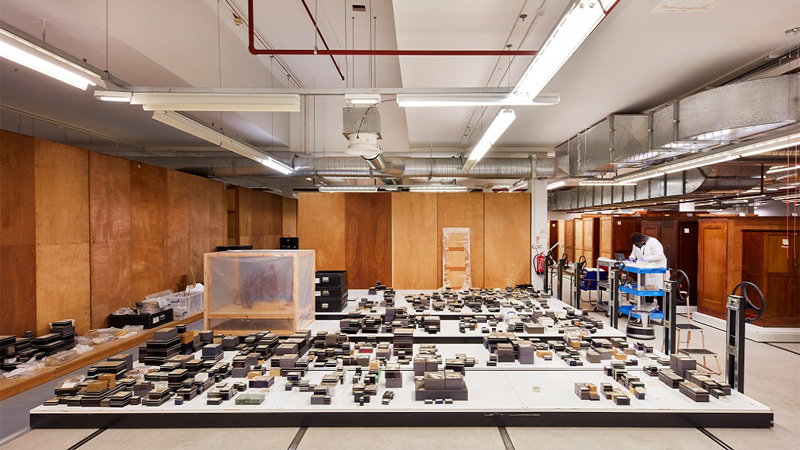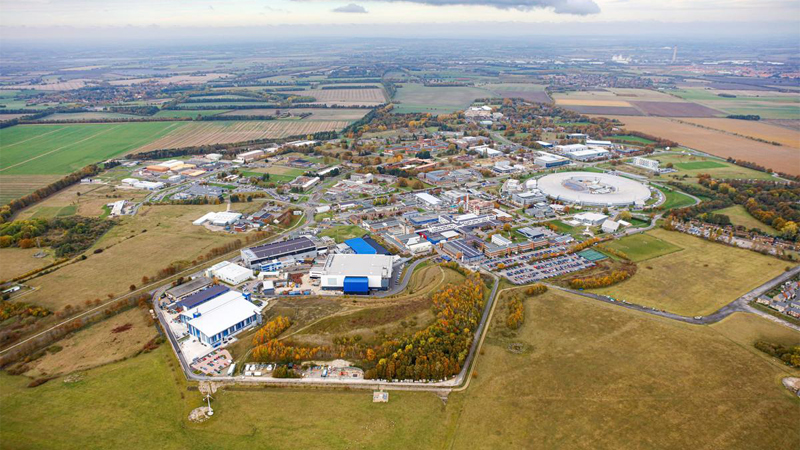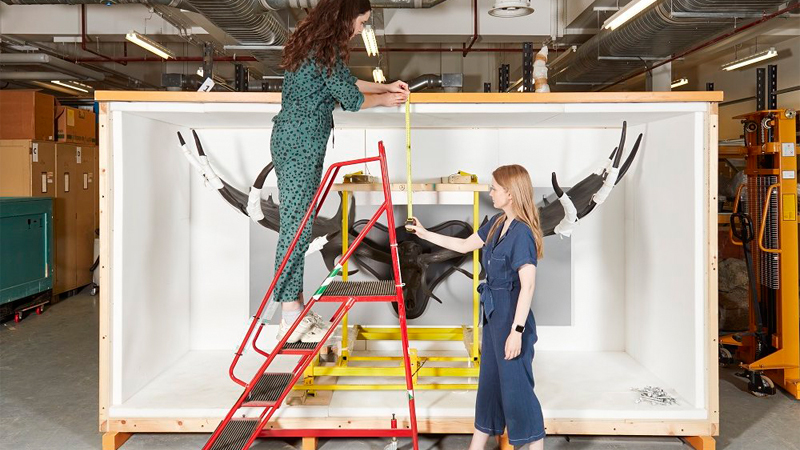London’s Natural History Museum (NHM) will relocate more than a third of its collection to its new state-of-the-art research facility in Oxfordshire over the course of the next five years.
The migration will be the largest collection move since the 1880s, and will see some 27 million specimens relocated to Harwell Campus - a new science and digitisation centre in Didcot, described by museum director Doug Gurr, as “one of the leading hubs of technology and innovation in the UK and internationally.”
Artefacts heading to the centre include non-insect invertebrates - such as corals, crustaceans and molluscs, the museum’s mammal and molecular collections as well as ocean bottom sediment specimens and more than 600 cubic meters (21,200 cubic feet) of library materials.
The moving process has already begun, with the NHM’s curation and conservation teams auditing collections and trialling packing, transport, checking and digitising techniques.
As part of the plan, museum personnel are hoping to digitise every specimen transferred to Harwell Campus, in order to preserve the artefacts and their “significant data”, safeguarding them for future generations.
Harwell Campus
Expected to be completed by 2026, Harwell Campus is a purpose-built research hub, with storage and conservation facilities, molecular laboratories, digitisation and imaging suites, collaborative spaces for resident and visiting scientists and even cryo-facilities.
The facility is supported by a £182m (US$252m, €213.8m) investment from the Department for Digital, Culture, Media & Sport (DCMS) and the UK government, which believes the site will strengthen the UK’s position in tackling issues such as climate change, resource scarcity, biodiversity loss and emerging diseases.
Dr Tim Littlewood, executive director of science at the NHM, said: “We’re in a race against time to find evidence-based solutions to the major challenges facing our planet. We need accurate big data on nature to measure global change and inform future policies.”
“This new centre will allow us to generate and process that through a major acceleration of our digitisation programme.”

The moving process has already begun, with NHM curators and conservationists auditing the collections and trialling packaging and transport methods CREDIT: TRUSTEES OF THE NATURAL HISTORY MUSEUM

The facility is supported by a £180m investment from the Department for Digital, Culture, Media & Sport (DCMS) and the UK government CREDIT: TRUSTEES OF THE NATURAL HISTORY MUSEUM

Artefacts heading to the centre include the museum’s mammal and molecular collections and ocean bottom sediment specimens CREDIT: TRUSTEES OF THE NATURAL HISTORY MUSEUM